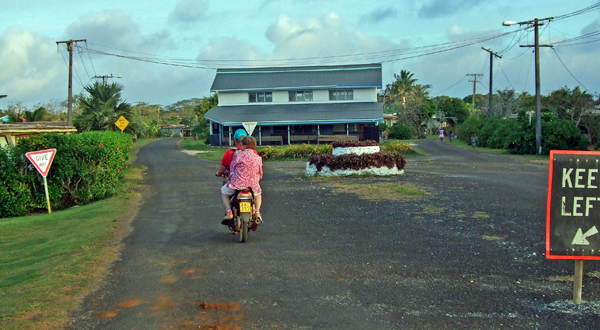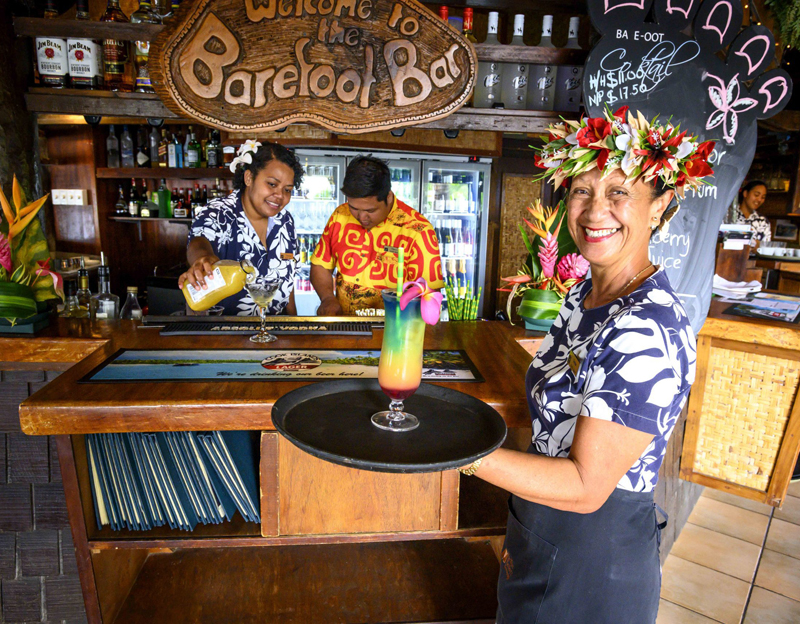WHO LIVES WHERE?



UP CLOSE AND PERSONAL
Photo: Creators Hype
These are the highlights of the latest results published by the Cook Islands Statistics Office. Population figures throughout this website are derived from the 2021 census. Some figures here are rounded so don't add up to 100%
A DECLINING POPULATION
The resident population of the Islands has been declining since the 1970s. Rarotonga has seen the biggest fall this time round - from 13,007 in 2016 to 10,898 at this census. The resident population of Aitutaki also declined significantly - down from 1,941 to 1,782. And remote and tiny Palmerston saw the number of permanent residents more than halve from 58 to just 25.
THE COVID FACTOR
The statisticians says Covid has been a major factor in the latest population decline with local residents seeking work overseas and a large number of migrant workers losing their jobs (mostly in tourism) and returning to their own countries



RAROTONGA
10,898: 72% of the total population
OTHER SOUTHERN GROUP ISLANDS 3,033: 20% of the total population
NORTHERN GROUP 1,091: 7% of the total population
Aitutaki has the second largest population (1,782)
Palmerston has the smallest (25)
Pukapuka is the most densely populated
There are 4,681 private households across the Islands
Percentage figures are rounded
This is a comparison of the latest figures with those from the previous census in 2016
SOUTHERN GROUP
Rarotonga 10,899 down 2,109 (-16%)
Aitutaki 1,782, down 159 (-9%)
Mangaia 471, down 28 (-6%)
Atiu 383, down 51 (-12%)
Mauke 249, down 48 (-16%)
Mitiaro 155, unchanged
NORTHERN GROUP
Manihiki 215, up 3 (+1%)
Penrhyn 233, up 7 (+3%)
Rakahanga 81, down 2 (-2%)
Pukapuka 456, up 12 (+3%)
Nassau 92, up 14 (+18%)
Palmerston* 25, down 33 (-57%)
Takutea and Manuae are deserted islands, so don't feature in the census. Also not included here is Suwarrow where there is no permanent resident population...just two caretakers from April to October who are counted elsewhere
*Palmerston is part of the Southern group geographically but counted in the Northern group for census purposes
Computers or laptops, iPads and tablets have overtaken TV as the most popular form of entertainment device. 4,732 households have one or more them. 788 have video game consoles. 4,078 households said they had a TV set and 1,476 have a DVD player. A radio/stereo is still in nearly 2,700 homes, but the days of making your own entertainment round a piano or keyboard seem to be declining. Just 336 homes have them.

Internet access is gaining popularity with 59.7 per cent of households now having internet or wi-fi access compared to 41 per cent in 2016. Mobile (cell) phones are the most popular means of communication with over 90 per cent of households saying they have access to their own devices. Just over 80% of users access the internet every day and nearly 90% of users over 15 consume some form of social media.

68.1% of those aged 15 or older are in employment. Nearly half of those (44.7%) said they were 'Service and Sales workers'. whose jobs included shop assistant, housekeeping and caregiving for children and the elderly. The public sector is the largest employer (17.8% of workers) followed closely by the wholesale and retail trade. The restaurant and accommodation sector saw a 15% drop in employees (from 20.9%) due to the border lockdown during Covid.
The median annual income on Rarotonga was NZ$18,000 and in the outer islands (Te Pa Enua) it was NZ$11,000. The annual average income for males over 15 was NZ$20,209 and for women 15+ it was NZ$18,348. Nearly 10% had no income at all, while 9.4% earned more than NZ$40,000 a year

The motorcyle/moped is the main form of transport with nearly 81% of households owning at least one. In the Southern Group islands that rises to 92.1%. Over half of homes on Rarotonga own a car, but in the Northern group just 0.4% have a car,van or truck (which the statisticians say makes sense considering the size of the islands in that group)
Smoking was declining when the 2016 census was taken, but the latest results show it's increased slightly. 23.3% of males over 15 said they smoked regularly (20.4% in 2016) and 14.6% of females (13.6% in 2016). 24% of males and 33.8% of females over 15 said they never drink while 12.4% of males and 4.2% of females drink regularly. For both sexes, that's significantly down on 2016


Most countries hold a census, but I don't know any others who ask about coconut consumption. Over 70 per cent of all households reported using coconuts mainly for eating, drinking and for making coconut oil. Over 21,000 coconuts were used for this purpose averaging up to 6 coconuts per household per week. About 32 per cent of all households also use coconut for animal feed.